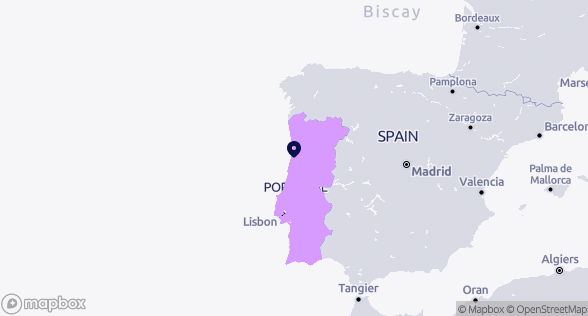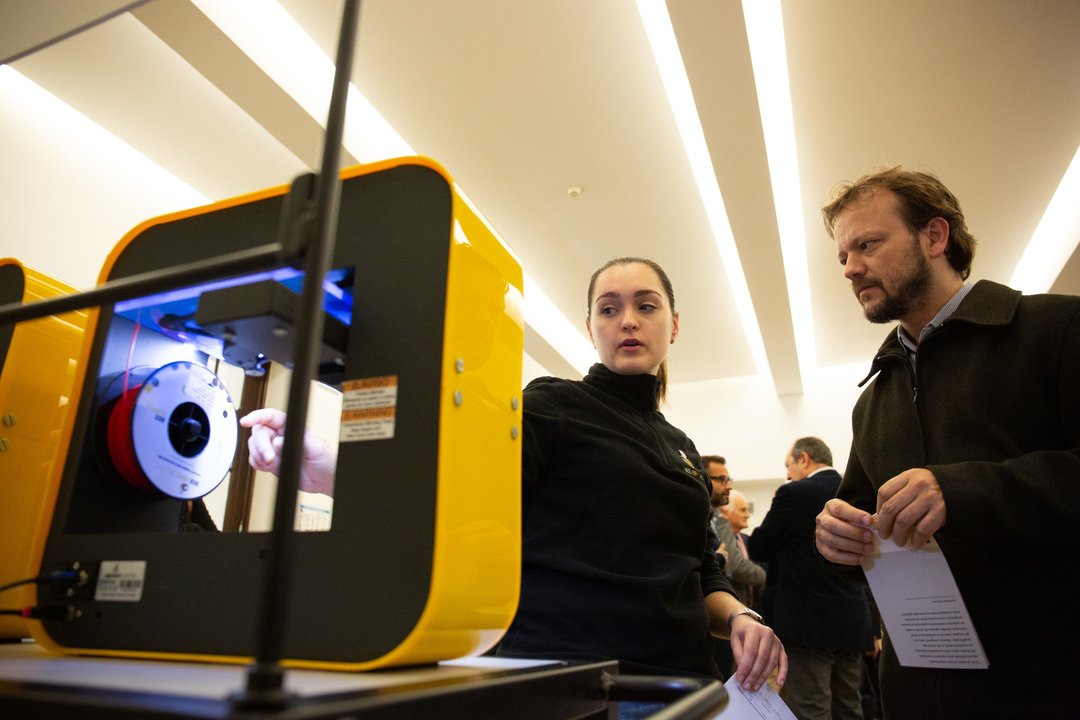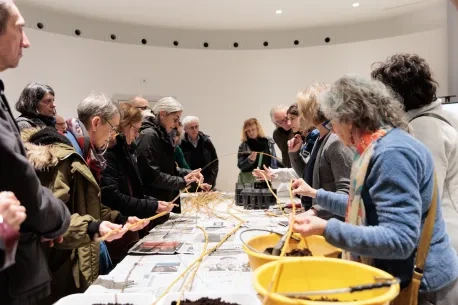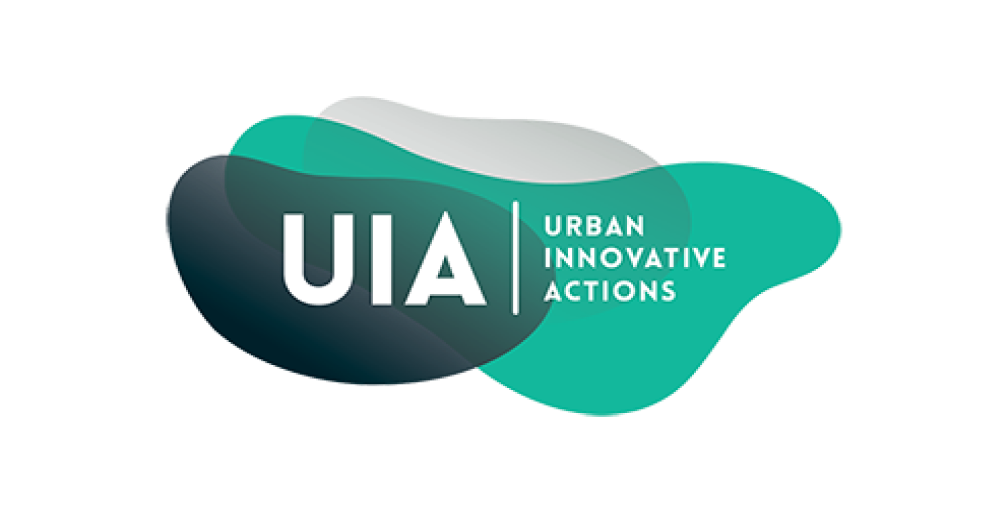
Aveiro
Portugal

This is a case study as part of an UIA report. You can access all of the project's resources on its project collection page.
1. Short project description
Aveiro (population 78,000) STEAM City has launched a technological revolution, tackling the challenge of brain drain through a series of actions on education and training, but also making new technologies more accessible to the residents.
Located in northwest Portugal, the city aims at producing and retaining new talents for its innovative industries adopting the STEAM approach, which adds the artistic element to the traditional technological fields of study (Science, Technology, Engineering and Mathematics), starting from kids attending the local primary school but also assessing the skills needed by the business sector.
The Labour Observatory created by Aveiro in the framework of the project has not only the function of monitoring and investigating future trends in terms of jobs and skills but has also provided training to local students and teachers through the Tech Labs. Furthermore, the project aimed also at creating a local culture on STEAM, with the organization of training involving academia and the local business sector, but also initiatives such as the Criatech Artistic Residencies program for artistic residences and mentoring with the objective to boost the creativity in STEAM areas and to develop mixed skills in creativity and digital competences.
Making the impact of ICT tangible to the residents and exploring new functions for improving the quality of life in Aveiro was another important axis on which the UIA project supported the testing of innovative actions. The installation of fiber infrastructure and sets of sensors in different city locations contributed to feeding the Urban Platform with updated data on urban mobility, environment, air quality and other urban functions paving the way to the development of innovative solutions to city challenges, such as urban traffic, but also the creation of new services to be developed in collaboration with local businesses and innovators.
The creation of a Tech Hub on a floor of the local public library contributed to making all these functions visible to residents and to show the impact of ICT for improving public spaces but also to present how the urban digital platform works and how the application of STEAM skills can be crucial for the local development in the medium and long term.
2. Aveiro and Just Transitions
In a city like Aveiro that is competing with bigger poles of attraction such as Lisbon and Porto, creating the best possible conditions for innovation is crucial for attracting a high-skilled workforce and retaining these talents to foster social, economic and environmental growth.
In sectors, such as engineering, cloud computing and artificial intelligence, which are already crucial for the local economy of a city hosting since a couple of decades some of the most innovative industries of Portugal, the increase in job opportunities on topics related to just transition is highly foreseeable.
At the same time, the creation of programs to train the professionals of the future in different sectors can be crucial for keeping the local workforce updated on future trends and well-positioned in the local and national job market.
Furthermore, using the city as a playground to test innovative ICT solutions through 5G connectivity and sensors can consolidate the role of Aveiro on the map of innovative cities at national and European level, but also encourage local businesses to create new services in green sectors which can increase the city’s competitiveness and the quality of the environment and public spaces for the residents.
Improving technological knowledge among different sectors of society is one of the main barriers that Aveiro is tackling with the UIA project. Amid the technological revolution stimulated by Aveiro STEAM City, the city needs to develop on stable basis different types of training activities to keep the different sectors of the workforce (in particular the students of the region) motivated and able to join the local IT companies, so creating new opportunities for all.
At the same time, the local authority needs to develop a set of skills for its own workforce in order to develop local green plans. The action of skills forecasting carried out by the Labour Observatory can be relevant not only to assess the skills needed by the local business sector, but also for creating effective public-private partnerships aimed at promoting just transition in the framework of a more competitive economy. The collaboration with the local university and the regional ICT companies can be relevant for developing training programs addressing a series of different challenges through STEAM education.
Opening the access to data collected by sensors installed in different locations for the Project Use Cases on environment, mobility and energy can foster a transition to new green functions and services, with a positive impact on the creation of qualified jobs and on the profile of local businesses.
3. How does the UIA Intervention promote Just Transitions ?
Aveiro STEAM City promotes Just Transition across the different axis of the project. In the first axis on education, the promotion of STEAM skills and knowledge among school students and teachers contributes to driving the transition towards new jobs, consolidating the city as an open laboratory for local and regional talents and interesting ground for testing innovation through the collaboration between public and private sector.
In the second axis on training, the creation of a Labour Observatory is crucial for monitoring the job profile most needed on medium and long term, with a considerable impact on the creation of green and sustainable jobs, but also for reorienting training in local economy toward STEAM also beyond the end of the project activities.
In the third axis on technologies, services and apps, testing innovative solutions to local challenges related to urban mobility, energy and environment show how the use of 5G technologies and sensors can improve the quality of life of the residents, but also can create new jobs and services related to relevant factors of sustainable urban development.
In this way, Aveiro embeds its skills strartegy within the wider stratic urban context, taking account of the digital and green megatrends. This ties in with point 2 of our report Roadmap.
4. Keys to success
In the case study of Aveiro, four factors were fundamental to guarantee the success of the project.
a. The strong leadership of the Municipality
The local authority developed a clear vision of the decisive role that STEAM can play for improving the quality of life of residents and for creating better jobs in Aveiro. Fostering the collaboration among different departments, the Municipality played a driving role not only in implementing the actions of the UIA project but also as a broker of innovation at local level, with positive effects also in improving the governance of the challenges related to sustainability.
b. A tangible impact on the city
The creation of a municipal Labour Observatory is an interesting example of how the public authority can offer a perspective vision on the skill needed for the local development, informing different types of residents on the competencies demanded by the market and supporting them in the transition. Furthermore, testing innovative solutions on urban mobility, environment and energy but also opening a Tech Hub on a floor of the local public library made the innovation produced by the project easily accessible and visible for different types of residents.
c. The commitment of the local partners
The collaboration between the Municipality, the University, the Altice Lab and other technological partners was decisive to drive the technological development of innovative solutions but also for creating a shared ground of knowledge that fostered the sense of urgency of acting on different dimensions. This element was crucial for recognizing to connect the development of new skills to different market needs, but also for increasing job opportunities for the participants to the training activities organized in the framework of the project.
d. The active involvement of different types of users
The organization of Tech Labs in local schools, STEAM training for teachers and Tech City Bootcamps for graduated students contributed to involving different types of residents around the topics of the project, creating a shared culture on the importance of soft skills for the future job market. Even though the impact of the actions carried out in the framework of the project will be visible in the next decade, the strong participation in the activities of Aveiro STEAM City was an important step for upskilling the current and future workforce and making the digital skills part of the local debate.
5. Upscaling and replication potential
The innovative solutions tested by Aveiro to retain talents through STEAM education and to foster the match with the skills demanded by the market have a strong potential in terms of replicability. The organization of Tech Labs in schools, training activities for different types of users and boot camps for graduates is part of a replicable scheme, that is making technologies more accessible for all.
Even though the pioneering testing and experimenting of products and services using 5G connection is based on huge infrastructural investments that are not easily replicable in many other European contexts, the use cases on urban mobility, environment and energy clearly show the importance of applying technological skills for promoting environmental transition, producing at the same time the conditions for the creation of new jobs.
The Labour Observatory is the solution tested by Aveiro with the highest potential in terms of replicability, highlighting the importance of an active role played by public authorities to explore current and future trends providing useful indications also to the private sector. This action, among the few examples of this kind running in Portugal, can be scaled up at regional and national level as a relevant axis of a strategy aimed at creating a bridge between talents and industries.
At the same time, identifying stakeholders who can provide training to students and workers can be one of the main activities of the Labour Observatory which can contribute to just transition through skilling and reskilling of different categories of workers. The collaboration with universities and innovative industries can lead to the creation of new courses and modules that can be replicated in other contexts. Furthermore, the connection with similar schemes carried out by other UIA cities such as Eindhoven and Cluj Napoca, which are including soft skills in their education programs for potential entrepreneurs and unemployed, can lead to the creation of transnational activities and programs on STEAM education involving a wide range of stakeholders, such as universities but also business activities, innovators and practitioners active in different fields.
About this resource
The Urban Innovative Actions (UIA) is a European Union initiative that provided funding to urban areas across Europe to test new and unproven solutions to urban challenges. The initiative had a total ERDF budget of €372 million for 2014-2020.
Similar content






Want to replicate this urban practice in your city?
Apply to an EUI City-to-City Exchange
Connect with a peer city who can bring you solutions and expertise and apply together to receive EUI support
More infos on EUI websiteBrowse existing Innovative Actions looking for Transfer Partners and cities willing to do a City-to-City Exchange looking for peers